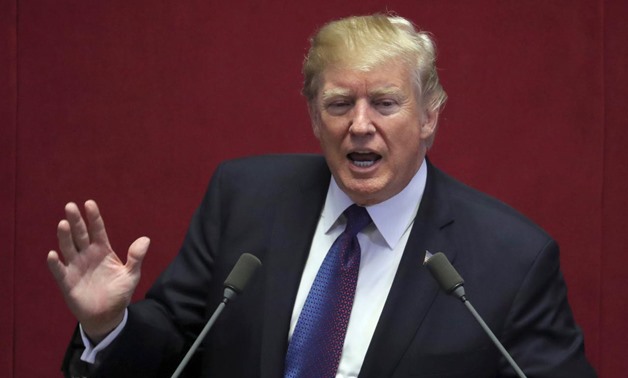
U.S. President Donald Trump delivers his speech at the National Assembly hall in Seoul, South Korea, Wednesday, Nov. 8, 2017. REUTERS/Lee Jin-man/Pool
NEW YORK - 8 November 2017: One year ago, when it became clear that Republican Donald Trump had pulled a historic upset to defeat Democrat Hillary Clinton to the U.S. presidency, futures in the Dow Jones Industrial Average tumbled nearly 900 points.
Ahead of the election, some market strategists found it difficult to plan financially for Trump’s possible presidency, in part because many of his proposals were seen as contradictory or lacking in detail.
However, at the close of trading of that session, Dow futures had reversed the drop to close up nearly 250 points, above 18,500.
That is the lowest they have been since then.
Despite not having a single major legislative victory and with prospects for a government shutdown in December looming, stocks have not looked back in the Trump era.
The S&P 500 .SPX is up 21.1 percent since the 2016 election, while the Dow .DJI has gained 28.5 percent in that period and the Nasdaq Composite .IXIC is up 30.3 percent.
Banks and technology have been the best performers over the past year, with telecommunication services the weakest performer. (reut.rs/2zkOcCf)
The Dow has closed at a record high more than 70 times since election day 2016 and the S&P 500 has closed at a record on 52 days in 2017 -the fifth-most in any year, but it could challenge the 59 record closes in 1928 for third place or the 62 in 1964 for second, according to S&P Dow Jones Indices data. The year with the most S&P record closing highs is 1995 with 77. There were 53 in 2014.
Economic growth across the globe, alongside stimulative monetary policy from the world’s largest central banks, have been behind the market’s rally. The expectation of pro-growth and business-friendly policies from the Trump administration as well as bets on deregulation, gave investors further reasons to invest in stocks.

Comments
Leave a Comment